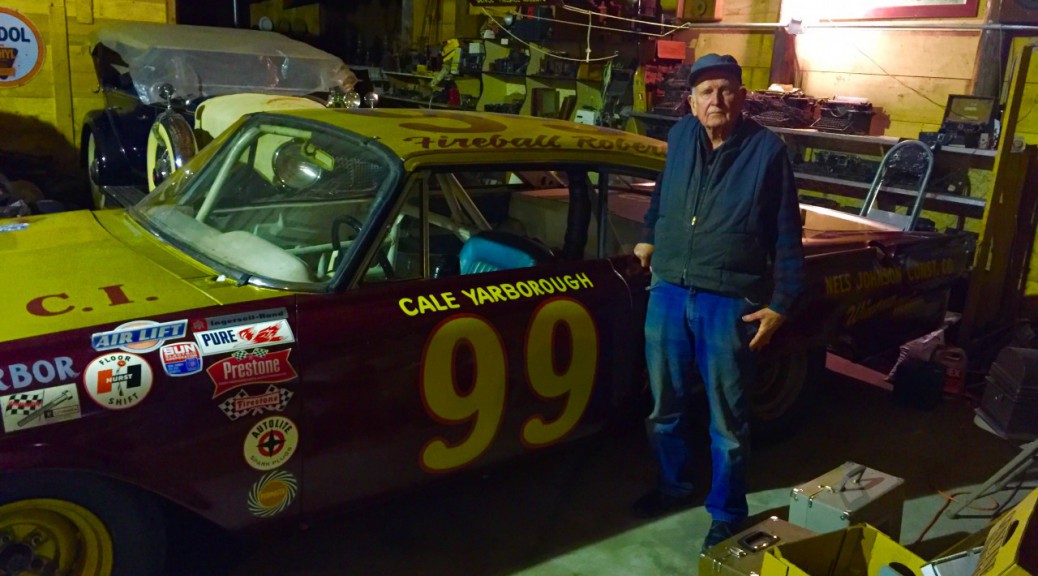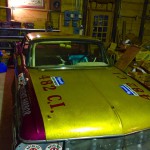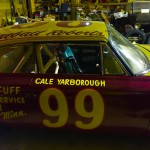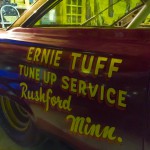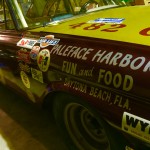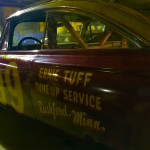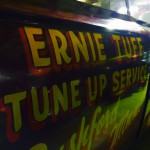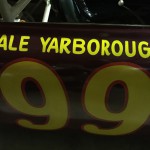This weekend marked the 58th annual running of the Daytona 500, NASCAR’s most prestigious race. Since its inception in 1959, Daytona has served as one of the most iconic tracks NASCAR visits. A lot has changed since then; the cars have changed, the rules have changed, and the drivers have changed since the infant stages of NASCAR.
Yet one thing remains the same; go faster than the rest.
Rushford, Minnesota’s, Ernie Tuff, 85, knows how to go fast, especially at Daytona International Speedway. He was dubbed “The World’s Fastest Man” after building an engine for Edward Glenn “Fireball” Roberts for the 1964 NASCAR Modified Sportsman Division race at Daytona International Speedway.
“Fireball was the greatest racecar driver in the world,” said Tuff in a recent interview. Roberts, a 2014 NASCAR Hall of Fame inductee collected 33 NASCAR Grand National (now Sprint Cup) wins, but he often preferred to dabble in the Modified Sportsman Division, where the cars were faster than the Grand National cars.
Back in the ’60s, there were two NASCAR divisions; the top-tier division was the NASCAR Grand National Series.
This series featured names like Richard Petty and David Pearson. There was a strict set of rules that every team, car and driver had to follow.
The second-tier series was the NASCAR Modified Sportsman Division. There were virtually no rules in this division, except that the car had to be at least three years older than the current model year. It was a proving ground where drivers tried to make a name for themselves and garner the attention of high-profile teams to get a shot at racing at the Grand National level.
Generally, the Grand National Series ran on Sundays, with the companion Modified Sportsman Division racing on Saturdays.
Compared to today’s NASCAR, the Modified Sportsman Division parallels the NASCAR Xfinty Series, the “AAA” of NASCAR.
Tuff is “a self-made man,” said local racing historian Dale Danielski.
Tuff said he looks up to people like Henry Ford and Thomas Edison, and it is evident with the historic photos hanging on the walls of his property. He said one of the reasons he was attracted to Ford and Edison was because they liked to tinker around and build things with their hands. So did Tuff. And he still works on project cars to this day.
Tuff never finished high school, quitting after eighth grade because he felt the stuffiness of a classroom didn’t let his creativity flow. “I would be sitting in the classroom, thinking about how to make a motor work,” said Tuff. “Not thinking about the math problems.”
Studying the life and career of Henry Ford closely, his allegiance was to the Ford Motor Company. “I didn’t like Chevys,” he said with a straight face. “Anyone who knew anything was racing a Ford.”
After a successful career as an engine builder at the local level, building engines for Jerry Richert and Scratch Daniels, among others, Tuff decided to give NASCAR a shot.
In 1964, Tuff built a 427 cubic inch Ford V8 engine and put in in a 1961 Ford Starliner, emblazoned with the No. 99 on the door. He brought it to Daytona, and Fireball Roberts was slated as the driver.
“I put in a half-inch longer stroke with fuel injection, and that’s when I got the greatest driver in the world, Fireball Roberts,” Tuff said.
During qualifying on the Wednesday prior to the race on Saturday, Roberts posted the fastest time out of the 50 drivers, reaching an average lap speed of 170.470 mph over the 2.5-mile track.
“They must’ve calculated it three or four times. It didn’t seem quite right,” he said.
The second-place qualifier, Junior Johnson, was nearly five mph slower in his 1959 Chevy, with a speed of 165.822 mph.
“It’s pretty easy to attract good talent when you have the fastest car in the world,” Tuff said.
As for the race, an ignition issue prevented Roberts and Tuff from reaching victory lane, completing just 37 of the 80 laps for the 200-mile race. The race was delayed because of rain, and was shortened because of darkness. Originally, the race was scheduled to be 250 miles. Roberts finished 44th.
Not only did Fireball Roberts drive for Tuff, but Cale Yarborough, LeeRoy Yarbrough, and Larry Frank also piloted the No. 99 Ford Starliner.
From 1964 to 1967, Tuff brought the same car to Daytona for the race, but in ’67 he visited Lee Petty in the Grand National garage area. Tuff acquired a stroked 426 cubic inch hemi Plymouth V8, swapping the Ford out for the Plymouth power.
LeeRoy Yarbrough drove the car in ’67 and he set a new speed record at Daytona. He became the first to average more than 180 mph for a single lap in a stock car.
In 1968, NASCAR president Bill France outlawed Tuff’s car in an effort to keep the competition equal, to Tuff’s chagrin.
The car then sat idle for 47 years on Tuff’s property, and didn’t run until a few years ago. Tuff keeps it in his garage with his other project cars, and he enjoys bringing it to vintage car shows in the summer.
“It wasn’t too great just being built in Rushford, Minnesota, but at least it was the best in the world.”
